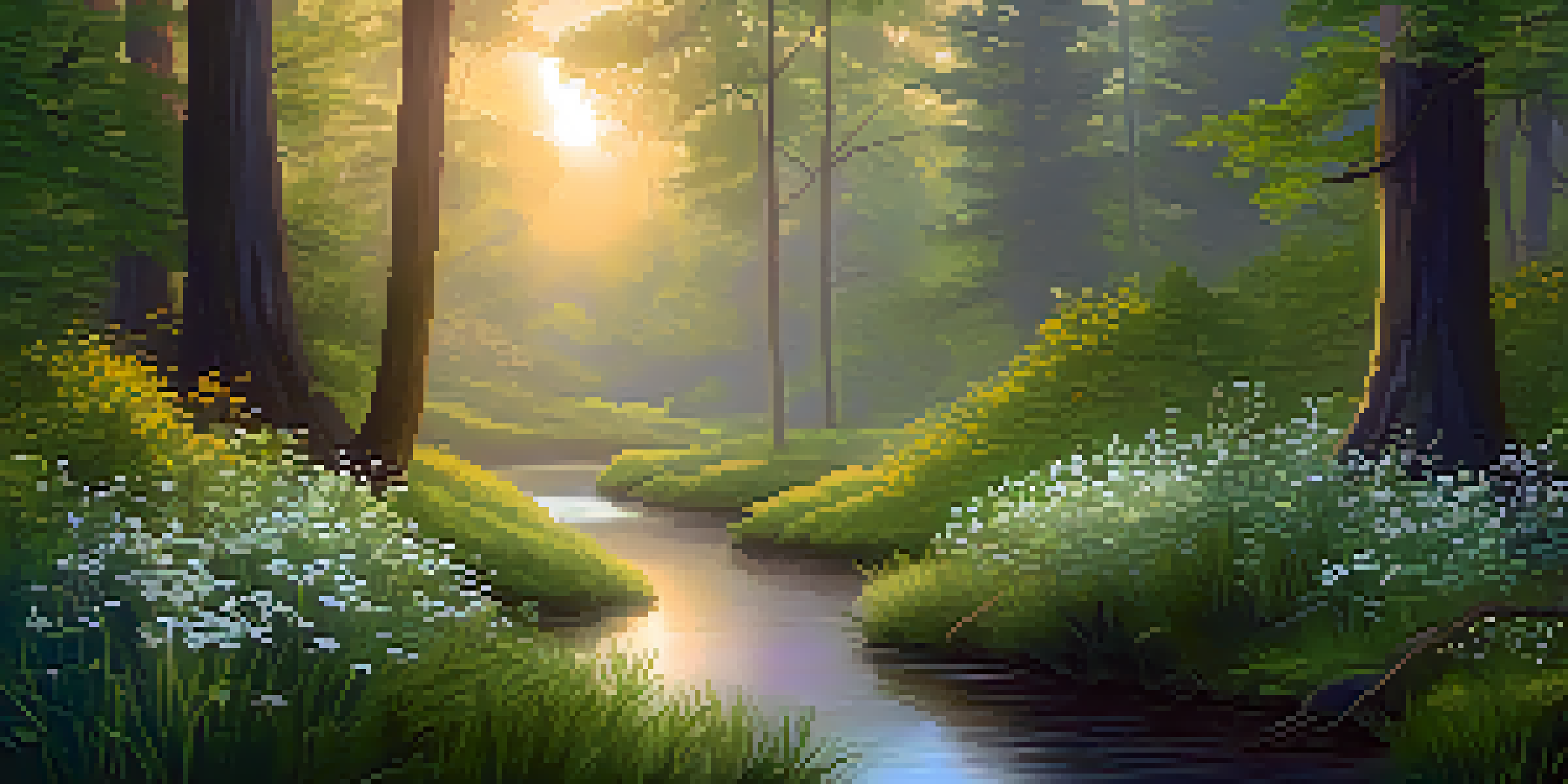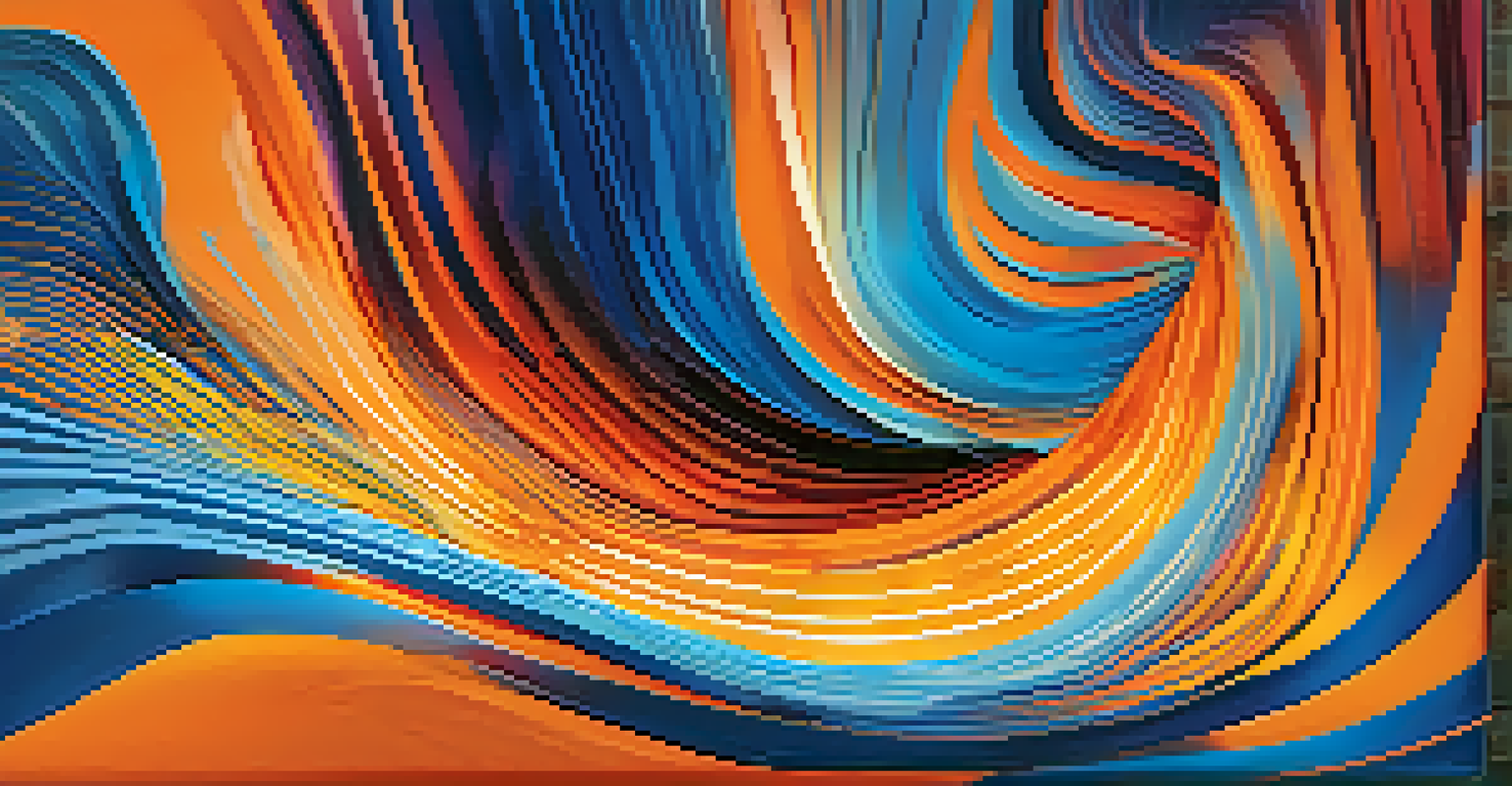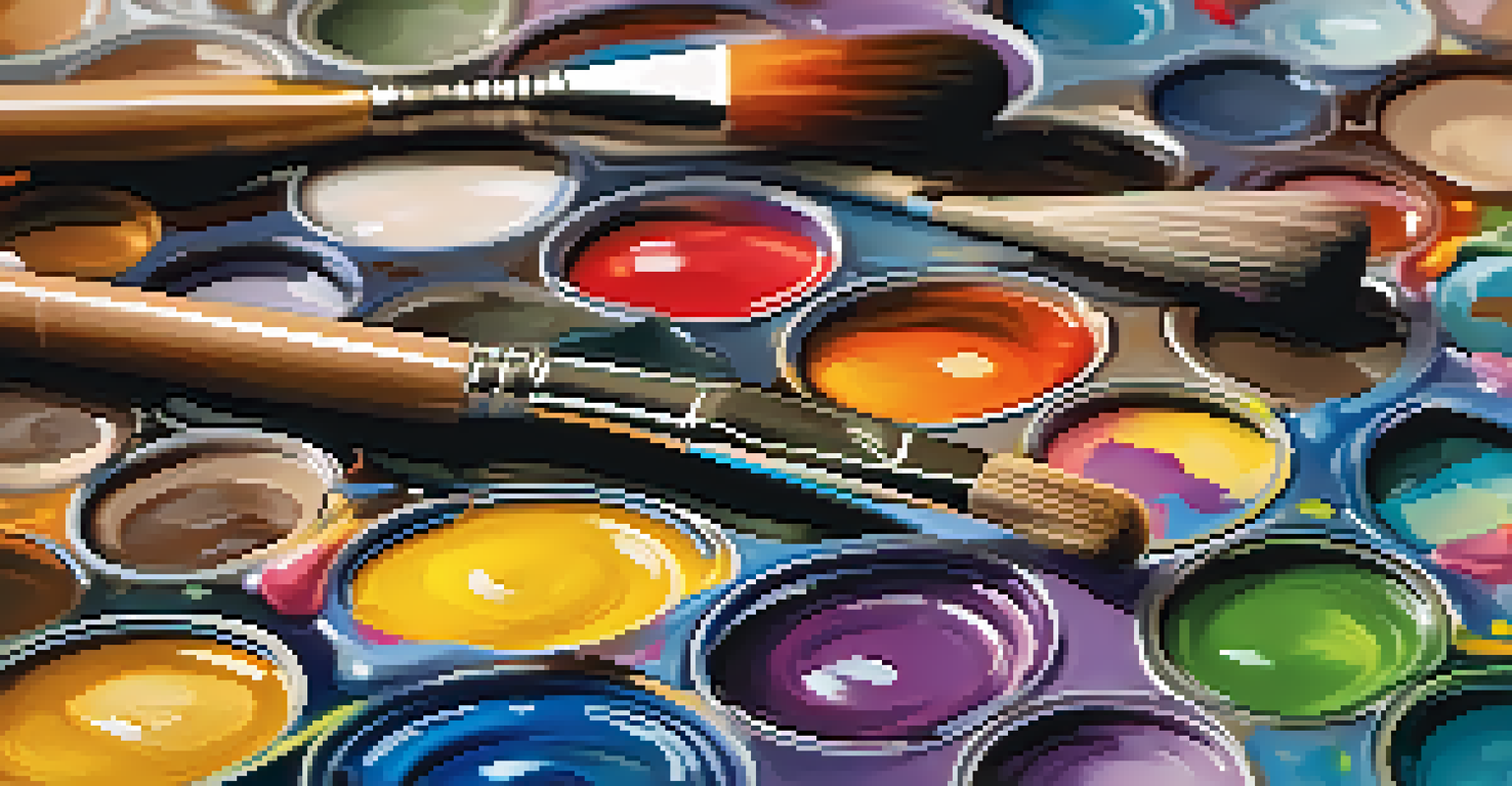Exploring Digital Painting: Tools Revolutionizing Art Creation

The Evolution of Digital Painting Tools
Digital painting has come a long way since its inception. Initially, artists were restricted to basic software that offered limited functionality. However, advancements in technology have led to the development of sophisticated tools that mirror traditional painting techniques while adding unique features.
Art is not freedom from discipline, but disciplined freedom.
Today, artists can use a range of tools from tablets to software that simulate brushes and textures. This blend of technology and artistry allows for greater creativity and experimentation. For example, an artist can create a watercolor effect digitally without the mess of real paint.
As digital painting continues to evolve, it opens up new avenues for expression and accessibility. Artists of all skill levels can now explore their creativity without the barriers imposed by traditional mediums.
Essential Software for Digital Artists
When it comes to digital painting, the software you choose can greatly influence your workflow and creativity. Popular programs like Adobe Photoshop and Corel Painter offer a plethora of tools tailored for artists. These applications provide everything from customizable brushes to advanced layering options that help refine your artwork.

For those looking for budget-friendly options, software like Krita and Procreate offers impressive features without breaking the bank. These programs are user-friendly and cater to both beginners and seasoned artists. They often come with tutorials and community support, making it easier to learn and grow.
Digital Tools Enhance Artistic Freedom
Advancements in digital painting tools allow artists to experiment creatively without the constraints of traditional mediums.
Ultimately, the right software can empower artists to bring their visions to life. The choice often depends on personal preference and the specific techniques an artist wants to explore.
The Role of Graphics Tablets in Digital Painting
Graphics tablets have revolutionized the way artists create digital art. Unlike traditional drawing tools, these devices allow for precision and sensitivity that translates brush strokes into digital format. With pressure-sensitive features, artists can vary their line thickness and opacity, mimicking real-life painting techniques.
Every artist was first an amateur.
Brands like Wacom and Huion offer tablets that cater to all levels of artistry, from beginners to professionals. Many tablets come with styluses that provide a natural drawing experience, making the transition from paper to screen seamless. It's like having a sketchpad that can instantly transform your sketches into digital masterpieces.
By using a graphics tablet, artists can enjoy the freedom to experiment without the constraints of traditional mediums. This flexibility encourages more creativity and innovation in their work.
Exploring Color Palettes and Customization
One of the most exciting aspects of digital painting is the ability to create and customize color palettes. Artists can easily experiment with hues, saturation, and brightness without wasting materials. This flexibility allows for quick adjustments, which can be crucial during the creative process.
Many digital painting programs offer tools to create color swatches, making it easy to save and reuse favorite palettes. Some artists find inspiration from existing art or nature, creating their own unique combinations that resonate with their style. This capability can lead to discovering new techniques and trends.
Collaboration Fuels Artist Growth
The vibrant digital art community fosters collaboration and support, encouraging artists to learn and innovate together.
Ultimately, the freedom to customize colors enhances an artist's ability to express their vision. The digital canvas becomes a playground where imagination knows no bounds.
Brush Techniques and Their Digital Counterparts
Just as traditional artists have their favorite brushes, digital artists have a wide array of brush options at their fingertips. Digital software often includes brushes that replicate the effects of oil, acrylic, watercolor, and more. This allows artists to explore different styles and techniques without the need for physical supplies.
Moreover, many programs allow users to create custom brushes tailored to their specific needs. This feature enables artists to craft unique textures and effects that can set their work apart. For example, an artist might design a brush that mimics the look of a dry brush stroke for a more textured appearance.
The ability to experiment with various brush techniques broadens an artist's creative toolkit, encouraging them to push the boundaries of their artistic capabilities.
Incorporating 3D Elements into Digital Art
The integration of 3D elements into digital painting is an exciting frontier for many artists. Programs like Blender and ZBrush allow artists to create three-dimensional models that can be incorporated into their paintings. This fusion of 2D and 3D opens up a realm of possibilities for storytelling and visual depth.
Artists can use 3D models as references or integrate them directly into their artwork, adding layers of complexity and realism. For instance, an artist might paint a landscape but include 3D elements like trees or buildings, enhancing the overall composition.
Future Innovations Shape Art Creation
Emerging technologies like AI and AR are set to revolutionize the digital painting landscape, enhancing efficiency and accessibility.
As the boundaries between 2D and 3D continue to blur, artists are finding innovative ways to express their creativity. This trend is shaping the future of digital painting and expanding the definition of what art can be.
The Community and Collaboration in Digital Art
The digital art community is vibrant and welcoming, offering countless opportunities for collaboration and feedback. Online platforms like DeviantArt and ArtStation allow artists to share their work, gain inspiration, and connect with others. These communities foster a supportive atmosphere where artists can learn from one another and grow together.
Collaboration in digital art can take many forms, from joint projects to friendly critiques. Many artists find that working with others challenges their creativity and pushes them to explore new techniques. For instance, a group of artists might collaborate on a themed project, combining their unique styles into a single artwork.

Engaging with the community not only enhances individual skills but also cultivates lasting friendships. The shared passion for art creates bonds that can lead to exciting opportunities and experiences.
The Future of Digital Painting Tools
As technology continues to advance, the future of digital painting tools looks bright. Innovations such as artificial intelligence (AI) and augmented reality (AR) are beginning to influence how artists create. AI can assist in generating ideas or even complete portions of artwork, while AR allows artists to visualize their creations in real-world settings.
These developments could revolutionize the creative process, making it more efficient and accessible. Imagine being able to paint in a virtual space, manipulating your artwork in real-time as you create. The possibilities are truly exciting.
While the tools may change, the essence of art remains the same: a means of expression and connection. As we look to the future, it's clear that digital painting will continue to evolve, inspiring artists for generations to come.